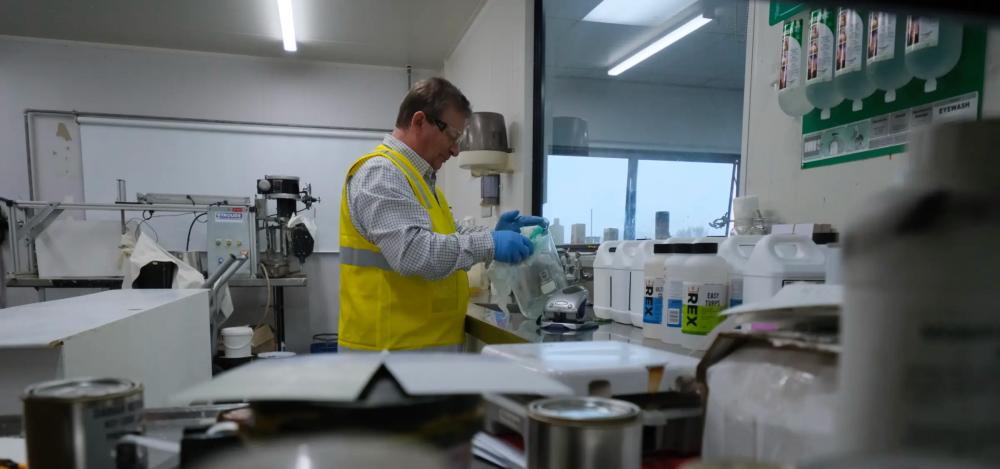

From Colour Gap to Category Shift:
The Chemistry Behind Damar’s Fluoro Animal Marker Paint
At Damar, innovation often starts with a single pigment and ends with an industry-wide step change.
Over three decades ago, Damar introduced its first line of animal marker paints. At the time, they were simple, five base colours: red, blue, green, yellow, orange and applied from a one litre tin with a brush.
“Fluro pigments are notoriously tricky,” says David Goddard, Group Technical Manager at Damar.
As demand evolved, so did Damar’s formulation approach. To make application more efficient and to avoid paint loss, we developed and introduced a specialised application brush cap with a plastic squeeze bottle. This ensured Damar’s market leadership.
The Colour That Sparked a Chain Reaction
One of Damar’s largest agricultural partners GEA needed a sixth colour to improve visibility and workflow. Purple and magenta proved too dark on bovine hides. Pink was the logical next step but achieving high visual contrast on a dark surface isn’t as easy as it sounds.
Initial prototypes used red and white pigment blends. The result? A pale, underwhelming colour that lacked visibility. That is when the formulation challenge began in earnest.
Turning Transparency into Opacity
The Damar team set out to dramatically increase opacity and chroma without compromising spray-ability. This meant carefully reworking pigment loading, dispersion techniques, and resin compatibility to deliver a high-saturation pink that would retain vibrancy on contact with animal fur.
Once the new pink formulation hit the field, the response was immediate. But there was a catch. The newly optimised pink made the original five colours look dull by comparison.
So, Damar reformulated the entire range using fluorescent pigment systems. High-energy dyes designed for increased reflectivity and brightness. This required significant changes to binder selection, pigment wetting agents, and UV stabilisers to ensure long-term durability in outdoor use.
“Fluro pigments are notoriously tricky,” says David Goddard, Group Technical Manager at Damar.
“Fluro pigments present significant formulation challenges due to their high photo reactivity and limited stability. While they offer enhanced brightness through UV induced fluorescence, their chemical sensitivity often necessitates extensive reformulation of the entire system from the ground up”.
Engineering for Form and Function
The innovation didn’t stop with the chemistry. Damar’s team also redeveloped the Fluro formulation for aerosol can delivery, ensuring consistency of spray, nozzle compatibility, and shelf stability. This was no simple transposition. Formulations had to be rebalanced for viscosity, pressure, and evaporation rates.
The result? A brighter, faster, more visible marking system that performs in the field, literally.
To enhance Damar’s export programme, a water based range was developed utilizing the applicator brush cap and a smaller plastic squeeze bottle. This new non-dangerous goods product makes transportation and storage much more accessible and cheaper.
Damar’s animal paint continues to be exported to Australia, UK, USA, Mexico, Chile, Argentina, South Africa, Ireland and maintains market leadership.
and limited stability"
David Goddard - Technical Manager at Damar


